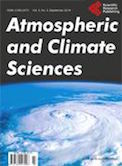
Abstract: Agriculture is one of the biggest sources of greenhouse gases. Rice production has been identified as one of the major sources of greenhouse gases, especially methane. However, data on the contributions of rice towards greenhouse gas emissions in tropical Africa are limited. In Zimbabwe, as in most of Sub-Saharan Africa, there are very few studies that have explored greenhouse gas emissions from agricultural lands. This study reports the first dataset on greenhouse gas emissions from intermittently flooded rice paddies in Zimbabwe. The objective of this study was to quantify greenhouse gas emissions from dambo rice under different tillage treatments, which were conventional tillage, no tillage, tied ridges, tied fallows, and mulching. Average soil nitrous oxide emissions were 5.9, 0.2, 5.4, 5.2 and 7.8 µg·m−2 ·hr−1 for tied fallows, conventional tillage, tied ridges, mulching and no tillage respectively. Average methane emission was 0.35 mg·m−2 ·hr−1 and maximum as 1.62 mg·m−2 ·hr−1 . Average methane emissions for the different tillage systems were 0.20, 0.18, 0.45, 0.52 and 0.38 mg·m−2 ·hr−1 for tied fallows, conventional tillage, tied ridges, mulching and no tillage respectively. Carbon dioxide emissions were 98.1, 56.0, 69.9, 94.8 and 95.5 mg·m−2 ·hr−1 for tied fallows, conventional tillage, tied ridges, mulching and no tillage respectively. The estimated emissions per 150 day cropping season were 1.4, 3.6 and 0.6 kg·ha−1 for methane, carbon dioxide and nitrous oxide respectively. We concluded that intermittently saturated dambo rice Paddys are a potential source of greenhouse gases which is important to global greenhouse gas budgets, thus, they deserve more careful study.








